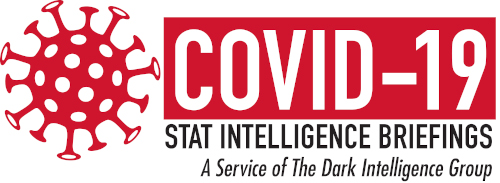COVID-19 Briefings-Dark Daily May 21 webinar provides valuable information for evaluating the run of emerging SARS-CoV-2 serology testing methods, discerning the mixed bag of test data coming out, and preparing for near-term high-volume serology testing needs.
Two experts in laboratory quality say COVID-19 serology (antibody) testing will be in demand at scale soon. While that scale may now be limited to 25 cities, clinical laboratories will be better off if they figure out how to implement and ensure high-quality serology testing methods before the need becomes critical.
The challenge for labs, however, is in developing an effective strategy to select COVID-19 serological test methods, introducing the tests into the existing laboratory workflow, and understanding the validation requirements of each test, says James O. Westgard, PhD.
In an exclusive 90-minute educational webinar held May 21, 2020, Dr. Westgard explained numerous facets that clinical laboratory directors and quality assurance officers must consider as they organize and coordinate serology testing in the lab.

During a May 21, 2020, webinar hosted by COVID-19 STAT and Dark Daily, James O. Westgard, PhD, addressed how clinical laboratory leaders can evaluate different serology COVID-19 tests. (Photo used with permission.)
James Westgard started the webinar by explaining the concepts of SARS-CoV-2 serology testing and the rapid state of change that is occurring on a regular basis. Manufacturers have been able to rapidly introduce their serological test methods into circulation without an accumulation of substantial validation data.
The goal was to get methods out there, explained Westgard, even though there was limited data. Then the FDA upped the requirements for clinical agreement and set a requirement for specificity. “They are clamping down to ensure better quality tests,” he said.
Westgard, an emeritus professor in the Department of Pathology and Laboratory Medicine at the University of Wisconsin Medical School, spent many years as Faculty Director of Quality Management Services for the Clinical Laboratories at the University of Wisconsin Hospital and Clinics. For the last 30 years, he has directed www.westgard.com, which focuses on laboratory quality.
Dr. Westgard discussed the statistical basis for correctly determining sensitivity and specificity for SARS-CoV-2 serology tests. “Look for proportions. Proportions are the way everything is going to be described,” he said. “All of the important characteristics for understanding qualitative tests are going to have to do with proportions.”
Several First Segment Points of Interest
- About neutralization assays. These will improve understanding of exactly which antibodies in the patient sample neutralize the virus and provide immunity.
- Ways to characterize the performance of the serological test. What factors affecting precision (uncertainty) and accuracy (correctness of classification and elements of clinical agreement) may affect patient results. The key to understanding performance characteristics and interactions has to do with being able to work with the numbers.
- Clinical agreement studies using comparative tests. This is where the system of tests and methods becomes important. Include a large number of positive patients; including specimens collected before last year will be useful because those patients could not have been exposed to SARS-CoV-2, to get a good estimate of sensitivity.
Dr. Westgard heavily emphasized the role that understanding prevalence has on knowing the predictive value of a serology test. “Reliability or confidence in the correctness of test results really depends on prevalence,” Westgard said, and during the webinar, he showed statistical analysis to support this important concept.
Positive test results present tricky logic, according to Dr. Westgard. He presented calculations, calculators, important concepts, and advocated a strategy for retesting by a second method to confirm positives.

Some serology testing methods are demonstrating inadequate performance, according to Sten Westgard, who explained study data during the May 21 webinar. Westgard will continue the program June 11. Learn more at www.darkdaily.com/webinar.
Sten Westgard, who has written and edited numerous books on clinical laboratory quality, presented the second half of the webinar and offered essential insights about how to assess public data on tests with an EUA Emergency Use Authorization (EUA) from the federal Food and Drug Administration (FDA). He cautioned that information is changing rapidly. “There is no way we’ll be able to understand or synthesize that many hundreds of possible methods; that’s why we encourage you to narrow down through the FDA EUA list,” he said. Displaying study data from both FDA submissions and pre-print servers, Westgard showed how to winnow the list of hundreds of serology method manufacturers down to under two dozen contenders.
While the latest list of COVID-19 testing methods has reached more than 650, there are a lot of methods that demonstrate inadequate performance. The need for quality has not been eliminated by the urgency of the pandemic crisis, according to Westgard.
Westgard explored multiple aspects of serology tests available, explaining how clinical laboratories can decide on which test is best for a lab’s specific situation. “When choosing your best available EUA tests, part of it will be determined by your application characteristics, part of it will be the methodology, and you might want to assemble this into a checklist,” Westgard said. “You can develop it into a list detailing all your important requirements that your lab wants from a test and put it so that you can compare different manufacturers.”
Second Segment Points of Interest
- What to look for in sensitivity and specificity performance.
- What is the appropriate seroconversion window for IgG, IgM methods.
- Methodology characteristics of ELISA and lateral flow assays.
- Global ranking criteria and suggestions for developing a decision checklist.
No Shortage of Questions from Medical Laboratory Professionals
While the Westgards provided actionable insights and resources for clinical laboratory teams that will be purchasing or selecting SARS-CoV-2 serology tests, the Westgards were inundated with questions. For labs, COVID-19 serology testing presents opportunities and a lot of challenges.
“Getting information from the manufacturers can be hard,” explained Sten Westgard. “We encourage you to start with the FDA and their list with the EUA methods because there we can say there are some real standards being applied.”

—By Caleb Williams, Editor, COVID-19 STAT
Related Resources:
Register for June 11 Westgard Webinar: Achieving Confidence in Serology Testing
Exclusive: CDC Plans Sweeping COVID-19 Antibody Study in 25 Metropolitan Areas






